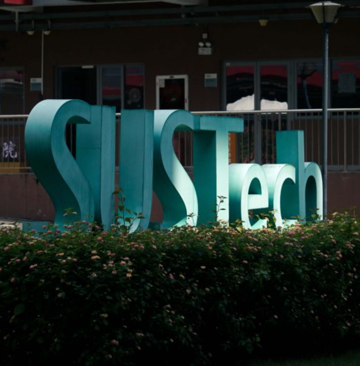SUSTech Professor Zheng Chunmiao Published Important Research Results on Movement of Pollutants in Underground Water
Days ago, Professor Zheng Chunmiao of the School of Environmental Sciences and Engineering in SUSTech, in collaboration with Dr. Marco Bianchi of British Geological Survey, published the thesis entitled A lithofacies approach for modeling non-Fickian solute transport in a heterogeneous alluvial aquifer in Water Resources Research, the top academic journal in the world arena of water resources (http://onlinelibrary.wiley.com/doi/10.1002/2015WR018186/full).
The thesis, from a brand-new perspective, discusses how to use the methods based on geological sedimentary facies to establish the inhomogeneous structure of aquifer that contains the underground water, thus simulating and predicting the “abnormal”movement process of pollutants in the highly-inhomogeneous media. The first author Dr. Marco Bianchi is the Doctor Candidate tutored by Professor Zheng Chunmiao when teaching in the University of Alabama in the USA.
The large quantity of practice shows that, the traditional solute movement model, when describing quantitatively the movement process of water-bearing aquifer, finds that theoretical conclusion differs greatly from the realities. As the study goes deeper, people have realized such phenomenon is caused by the heterogeneity of the water-bearing aquifer. Nevertheless, the essential mechanism of heterogeneity influencing the solute movement is the problem that has puzzled the hydro-geologists for a long time. In the past decade and more, Professor Zheng Chunmiao’s research team, by making many tracer experiments of underground water and data analysis, proposes a set of new theories about the optimal water-flow channels at cm level or even smaller level controlling the solute movement. In this way, it explains the cause and mechanism of heterogeneity of the water-bearing aquifer impacting on the solute movement, thus providing powerful technical support to the project of restoring underground water.
.png) (a) Diagram of distribution of sedimentary facies; (b) Diagram showing distribution of water-bearing aquifer based on the sedimentary facies; (c) Diagram showing movement of solute
(a) Diagram of distribution of sedimentary facies; (b) Diagram showing distribution of water-bearing aquifer based on the sedimentary facies; (c) Diagram showing movement of solute
It is very difficult to directly observe the distribution of optimal water-flow channels at cm or smaller level in the water-bearing aquifer. In the past, the major methods were to use many drills to make tests of water-bearing aquifer. At the same time, the geophysical prospecting means were used to measure the space distribution of penetration nature of water-bearing aquifer. The traditional methods were not only expensive, but also difficult to expand to larger scale. The latest-published research results proves that it is possible to use the limited drilling materials and divide the sediments in the water-bearing aquifer into a few sedimentary facies, such as coarse sand facies, silt facies and clay facies. After that, by using the geological statistical methods, establish the 3D diagram showing the distribution of sedimentary facies. The constant sedimentary facies having wonderful penetration nature often dominate the movement of pollutants. The research shows the 3D model of solute movement showing the distribution of sedimentary facies can better reflect the result of actual tracer test, thus improving the prediction of solute movement model.
.jpg)
Trade test field of underground water
The results have attracted great attention from the academic community of underground water. According to Professor Graham Fogg, the famous hydro-geologist in the University of California, “It is a very crucial article that will change the opinion of the entire hydro-geology discipline on the simulation of solute movement”. Researcher Daniel Feinstein in the US Geological Survey said, “This article is not only worth publishing, but also be the must-read one for all people working in the simulation of solute movement of underground water”. At the same time, the article has been selected by Water Resources Research as the “highlight of studies”.
The research has gained support from major projects in the National Natural Science Foundation of China.
